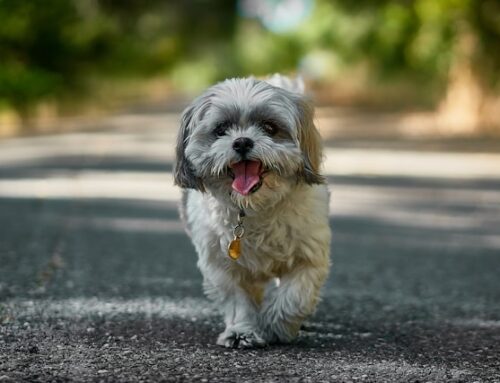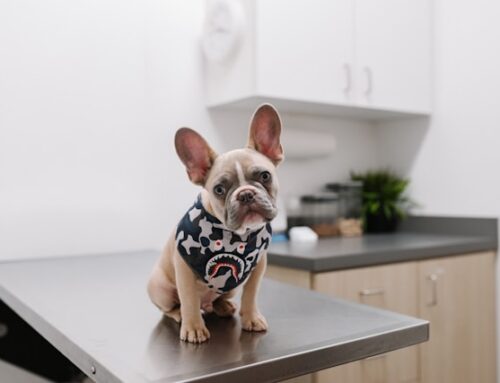Overview
Introduction to Dog Leash
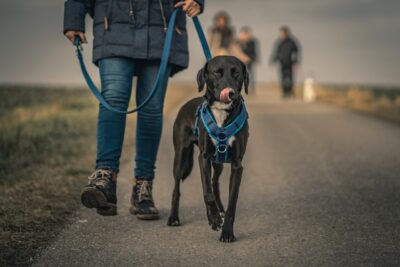
Choosing the perfect dog leash is an essential decision for every dog owner. The right leash not only ensures your dog’s safety and security but also enhances your walking experience together.
With a plethora of options available, from different materials to various lengths and styles, finding the ideal dog leash can seem daunting.
Hardware refers to the attachments on the leash, such as clasps and D-rings. Sturdy hardware is essential to prevent the leash from breaking or coming loose during walks.
Material plays a crucial role in the durability and comfort of the leash. Common materials include nylon, leather, and rope. Nylon is durable and easy to clean, while leather is stylish and becomes more comfortable over time. Rope leashes are sturdy and provide a secure grip.
Length is another important consideration. A standard leash length is around 6 feet, which allows your dog enough freedom to explore while still keeping them close and under control. Shorter leashes are ideal for training, while longer leashes are great for more freedom in open spaces.
This complete guide will help you navigate through the world of dog leashes, ensuring you find the perfect one to bring love and joy to your walks with your furry companion.
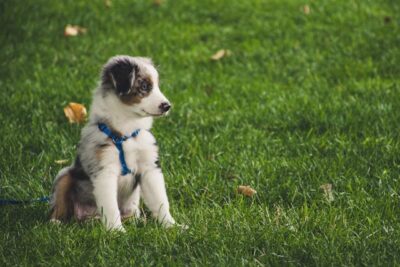
Importance of using a Dog Leash
Using a dog leash is crucial for the safety of your pet and others. A leash provides control during walks, preventing your dog from running into dangerous situations such as traffic or aggressive dogs. It also helps you comply with local leash laws, avoiding fines and ensuring a peaceful outing for everyone.
Additionally, it’s a way to share a nice walk together and ensure your dog stays close by, fostering a strong bond between you both. Regular walks on a leash can also provide mental and physical stimulation for your dog, contributing to their overall health and well-being.
By using a leash, you can enjoy a safe and enjoyable walking experience with your furry friend, knowing that you’re both protected and connected throughout your adventure.
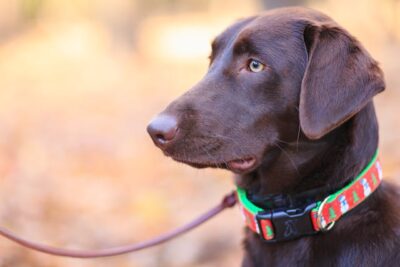
Overview of different types of Dog Leashes
There are several types of dog leashes, also known as leads, each serving different purposes. Standard leashes are simple and sturdy, suitable for everyday walks and comfortable to hold in hand.
Retractable leashes allow dogs more freedom to roam while still maintaining control, but they require careful handling. Adjustable leashes offer versatility in length, and martingale leashes are ideal for dogs that may slip out of traditional collars.
Choosing the right leash depends on your dog’s size, behavior, and your walking preferences. It’s essential to consider these factors when selecting a leash to ensure both you and your dog are comfortable and safe during walks.
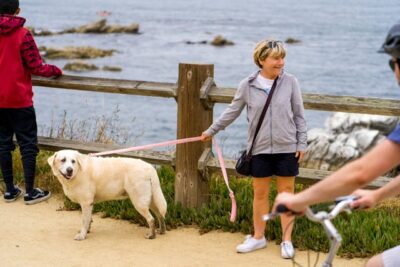
Types of Dog Leashes
Standard flat leash
A standard flat leash is one of the most common types of leads used for dog walking. It is a simple, straightforward option that provides control and security while allowing your dog to comfortably explore their surroundings.
These leashes are typically made of nylon or leather and come in various lengths and widths to suit different dog sizes and walking preferences. The flat design of the leash makes it easy to hold and provides a secure grip, ensuring that you can maintain control of your dog during walks.
One of the advantages of a standard flat leash is its versatility. It can be used for everyday walks in the neighborhood, training sessions, or trips to the park. The simplicity of the design also makes it easy to clean and maintain, ensuring that it remains in good condition for a long time.
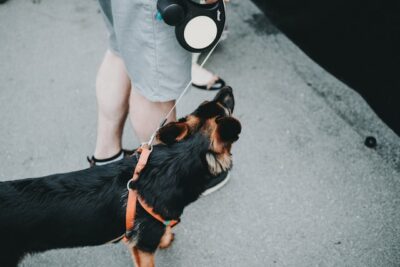
Retractable leash
A retractable leash is a popular choice among dog owners as it offers flexibility and freedom for your dog to explore while still keeping them under control. It features a hand-held device that allows you to adjust the length of the lead, giving your dog more room to roam or keeping them close when needed.
These leashes typically consist of a thin cord or belt that retracts into a plastic handle. The handle contains a mechanism that allows you to lock the leash at a certain length, giving you control over how much freedom your dog has. This feature is particularly useful in open spaces where you may want to give your dog more room to move around safely.
However, it’s important to use a retractable leash with caution. The extended length can make it difficult to control your dog in busy or dangerous environments. Additionally, the thin cord or belt can pose a risk of tangling or breaking, especially with larger or stronger dogs.

Martingale leash
A Martingale leash, also known as a limited-slip leash, is designed with a loop that tightens when your dog pulls, preventing them from slipping out of the collar. This type of lead provides gentle and effective control, making it a popular choice for training and walking strong or easily distracted dogs.
The Martingale leash is typically made of nylon or similar material and consists of two loops. The main loop goes around your dog’s neck like a regular collar, while the second loop, known as the control loop, tightens when your dog pulls on the leash. This tightening action prevents the collar from slipping off your dog’s head, providing a secure and safe way to walk them.
One of the advantages of a Martingale leash is that it provides control without causing discomfort to your dog. The tightening action is gentle and does not choke or harm your dog in any way. This makes it a great choice for training, as it allows you to correct your dog’s behavior without using harsh methods.
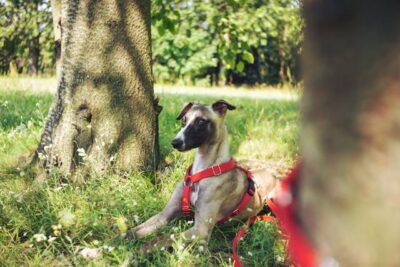
Adjustable leash
An adjustable leash is a versatile option that allows you to change the length of the lead to suit your needs. This type of lead provides flexibility and control, making it ideal for various walking environments and training purposes.
These leashes typically feature multiple attachment points or loops along the length of the lead, allowing you to adjust the length as needed. This means you can keep your dog close by in busy or crowded areas and give them more freedom to explore in open spaces.
Adjustable leashes are great for training purposes as well. You can shorten the lead to keep your dog focused and under control during training sessions, then lengthen it for more freedom once they’ve mastered a command.
The versatility of an adjustable leash makes it a practical choice for dog owners who want a single lead that can adapt to different situations. Whether you’re walking in the city, hiking in the mountains, or working on obedience training, an adjustable leash can provide the flexibility and control you need to keep your dog safe and comfortable.
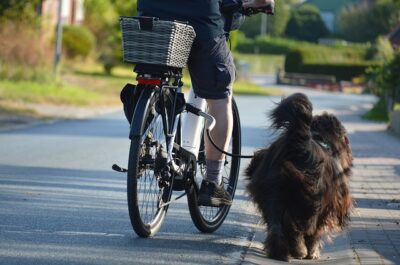
Hands-free leash
A hands-free leash is designed to allow you to walk or run with your dog without having to hold onto the lead. This type of leash provides convenience and freedom of movement, making it ideal for active dog owners.
Hands-free leashes typically come in the form of a belt or harness that you wear around your waist, with a leash attached to it. This design allows you to keep your hands free while still maintaining control over your dog. It’s perfect for activities like jogging, hiking, or simply walking around the neighborhood, allowing you to focus on your workout or enjoy a hands-free stroll with your furry companion.
One of the benefits of a hands-free leash is that it can help reduce strain on your arms and shoulders compared to traditional leashes. It also allows for better balance and stability, especially when running or navigating uneven terrain.
Hands-free leashes are available in various styles and lengths to suit different dog sizes and activities. Some even come with additional features like pockets or pouches for storing essentials like keys or treats.
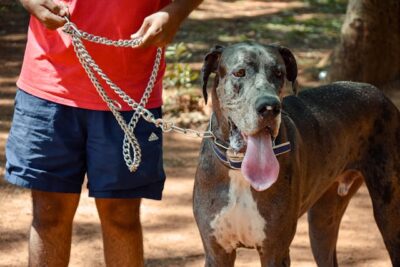
Chain leash
A chain leash is a durable and strong option for dogs that tend to chew through traditional leads. Made of metal links, this type of leash provides sturdy control, making it ideal for larger or more powerful dogs.
One of the main advantages of a chain leash is its durability. The metal construction is resistant to chewing and can withstand the strength of even the most energetic dogs. This makes it a reliable choice for dog owners who have had issues with their dogs breaking or damaging other types of leashes.
However, there are some drawbacks to consider. A chain leash can be heavier and less comfortable to hold compared to leashes made of softer materials like nylon or leather. The metal links can also be noisy, which may be a consideration for dogs that are sensitive to sound.
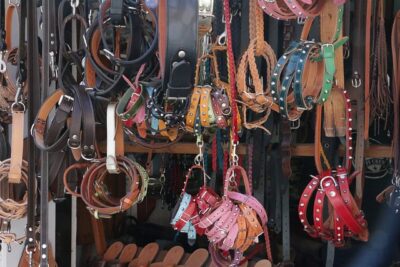
Choosing the Right Material
Different Leash Materials
When choosing the right leash material, consider factors like durability, comfort, and ease of cleaning to ensure it meets your dog’s needs and your preferences. Common materials include nylon, leather, and chain, each offering unique benefits and considerations.
Nylon is a popular choice for dog leashes due to its durability and affordability. It is resistant to wear and tear, making it ideal for active dogs or those that tend to pull. Nylon leashes are also easy to clean, as they can be wiped down or washed with soap and water. However, some nylon leashes may be prone to fraying over time, so it’s essential to choose a high-quality option.
Leather leashes are stylish and comfortable to hold, making them a favorite among many dog owners. Leather is also durable and becomes more supple over time, molding to your hand for a comfortable grip. However, leather leashes require more maintenance than nylon, as they can stain or absorb odors if not properly cared for. Regular conditioning can help keep leather leashes in top condition.
Chain leashes are extremely durable and resistant to chewing, making them ideal for dogs that tend to be rough on their leashes. However, chain leashes can be heavy and less comfortable to hold than nylon or leather options. They also tend to be noisy, which may be a consideration for dogs that are sensitive to sound.
Ultimately, the right leash material depends on your dog’s behavior, your walking habits, and your personal preferences. Consider these factors carefully to choose a leash that is comfortable, durable, and easy to maintain for both you and your furry friend.
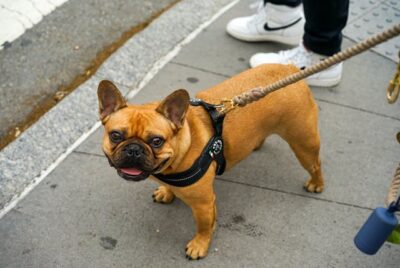
Length and Width Considerations
Short vs. long leashes
When considering leash length and width, it’s important to think about your walking environment and your dog’s size and behavior. Shorter leashes offer more control, making them ideal for crowded or busy areas where you need to keep your dog close by. They are also beneficial for training purposes, as they allow you to communicate more effectively with your dog and redirect their attention when needed.
On the other hand, longer leashes provide more freedom for your dog to explore and roam around, making them suitable for open spaces like parks or hiking trails. They allow your dog to sniff, run, and explore their surroundings while still giving you some control over their movements.
When it comes to leash width, thicker leashes are generally more durable and comfortable to hold, especially for larger dogs. Thinner leashes may be suitable for smaller dogs or for owners who prefer a lighter leash.
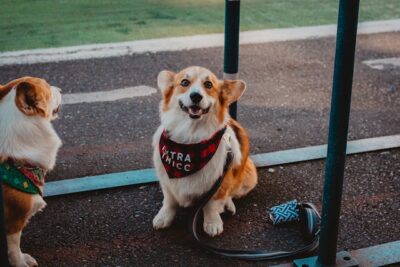
Width for different dog sizes and strengths
When choosing the right leash width, consider your dog’s size and strength. Smaller dogs may do well with narrower widths, as lighter leashes are easier for them to manage and less likely to weigh them down. Narrower leashes are also generally more comfortable for smaller dogs to wear.
On the other hand, larger, stronger dogs may benefit from wider leashes. Wider leashes provide better control and are less likely to snap or break under the strain of a larger dog pulling. They also distribute pressure more evenly across your hand, reducing the risk of discomfort or injury during walks.
Additionally, wider leashes can be easier for owners to grip, especially if their dog tends to pull or lunge. The extra width provides a more substantial handle, giving you better control over your dog’s movements.

Features to Look For
Reflective strips for visibility at night
When looking for features in dog leashes, consider ones with reflective strips for increased visibility at night or in low-light conditions. This can help keep you and your dog safe during evening walks by making you more visible to passing vehicles and pedestrians.
Reflective strips are typically made of a highly reflective material that shines brightly when light is shone upon it. This makes you and your dog more noticeable in the dark, reducing the risk of accidents or collisions.
In addition to reflective strips, some leashes also come with LED lights or glow-in-the-dark features for even greater visibility. These features can be especially useful if you frequently walk in areas with poor lighting or heavy traffic.
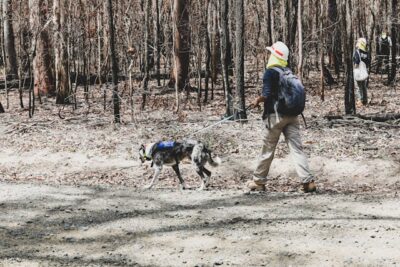
Padded handles for comfort
Look for dog leashes with padded handles for added comfort, especially during long walks or when your dog pulls. The padding helps reduce strain on your hands and provides a more comfortable grip, making it easier to maintain control over your dog.
Padded handles are typically made of soft, cushioned material such as neoprene or foam. This padding not only provides a more comfortable grip but also helps absorb some of the impact if your dog suddenly pulls or lunges.
In addition to comfort, padded handles can also help prevent chafing or irritation on your hands, particularly if you have sensitive skin or are prone to blisters. The added cushioning can make a big difference in how your hands feel after a long walk, helping to make the experience more enjoyable for both you and your dog.

Durable hardware for security
Look for dog leashes with durable hardware, such as strong metal clasps and rings, to ensure security and prevent breakage. This hardware provides peace of mind when walking or training your dog, knowing that the leash is secure and reliable.
Strong metal clasps and rings are less likely to break or bend under pressure, making them ideal for dogs that tend to pull or lunge. They provide a secure connection between the leash and your dog’s collar or harness, reducing the risk of accidental escape or detachment.
In addition to durability, quality hardware can also make it easier to attach and detach the leash quickly and efficiently. This can be especially useful in situations where you need to control your dog quickly, such as when encountering other dogs or crossing busy streets.

Weather-resistant materials for longevity
Look for dog leashes made from weather-resistant materials to ensure longevity and durability, even in harsh conditions. These materials can withstand moisture and extreme temperatures, making them ideal for outdoor use in various weather conditions.
Weather-resistant materials such as nylon or polyester are often treated to be water-resistant, preventing them from becoming soaked or damaged in wet conditions. This is particularly useful if you live in a rainy climate or enjoy outdoor activities like hiking or camping with your dog.
In addition to being water-resistant, these materials are also often resistant to fading and mildew, ensuring that your leash stays looking and smelling fresh even after prolonged use. This can help prolong the life of your leash and reduce the need for frequent replacements.
For colder climates or winter walks, consider a leash made from a material that remains flexible in low temperatures to prevent it from becoming brittle and breaking. For beach walks, a leash that is resistant to saltwater corrosion can help maintain its integrity and durability in sandy and salty conditions.
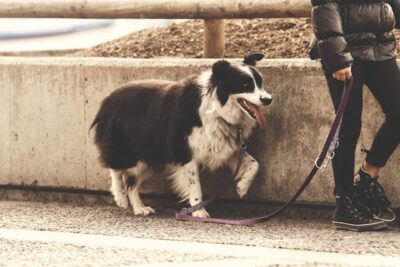
Understanding Leash Laws and Regulations
Local leash laws
In Florida, dogs are required to be leashed in public areas unless in designated off-leash areas. This law is in place to ensure the safety of pets and people in public spaces. It helps prevent incidents such as dog fights, accidents involving vehicles, and unwanted interactions with wildlife.
Similarly, Georgia mandates dogs to be on a leash in public areas, except in designated off-leash areas or when hunting. This law aims to protect dogs from running into dangerous situations and causing harm to themselves or others. It also helps prevent conflicts between dogs and people or other animals in public settings.
Ohio also requires dogs to be leashed in public, with exceptions for designated off-leash areas. This law is intended to promote responsible pet ownership and ensure the safety and well-being of dogs and people in public spaces. Adhering to these laws not only keeps pets safe but also fosters a respectful and harmonious environment for all members of the community.
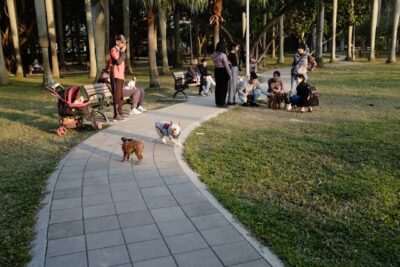
Public area regulations
Understanding leash laws and regulations is crucial for responsible pet ownership. In public areas, dogs are typically required to be on a leash to ensure the safety of pedestrians, other animals, and the dog itself.
Leash laws are designed to prevent incidents such as dog attacks, traffic accidents, and conflicts between dogs. They also help protect wildlife and preserve the natural environment by reducing the impact of roaming dogs.
By keeping your dog on a leash in public areas, you can prevent potentially dangerous situations and demonstrate respect for other people and their pets. It also shows that you are a responsible pet owner who cares about the well-being of your dog and the community.
It’s important to familiarize yourself with the specific leash laws in your area and adhere to them at all times when in public with your dog. This simple act can help ensure the safety of everyone around you and make the outdoor experience more enjoyable for you and your furry companion.
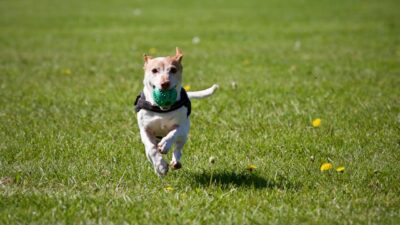
Off-leash designated areas
Understanding leash laws and regulations includes knowing about off-leash designated areas where dogs can roam freely without a leash. These areas are often designated by local authorities and provide a safe environment for dogs to exercise and play.
Off-leash designated areas are typically enclosed or fenced-in spaces that allow dogs to run and play safely without the risk of running into traffic or getting lost. They are often equipped with amenities such as water stations, waste disposal facilities, and agility equipment to enhance the experience for both dogs and their owners.
These areas are not only beneficial for dogs’ physical health but also for their mental well-being. Dogs can socialize with other dogs, explore new environments, and burn off excess energy in a controlled and supervised setting.
It’s important to follow the rules and guidelines set forth by local authorities when using off-leash designated areas. This includes ensuring that your dog is under control at all times, cleaning up after your pet, and respecting other users of the space.
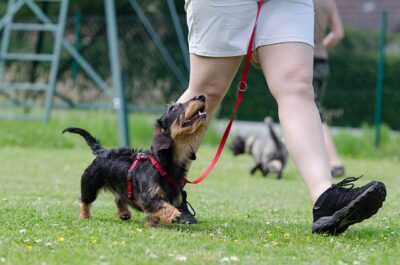
Training Tips for Leash Walking
Teaching your dog to walk on a leash
Training your dog to walk on a leash involves teaching them to walk calmly beside you without pulling.
Start by using a short leash and rewarding your dog for staying close to you. Use treats or verbal praise to reinforce this behavior. If your dog starts to pull, stop walking and wait for them to calm down before continuing.
Gradually increase the length of the leash as your dog learns to walk politely on a leash. This process may take time and patience, so be consistent with your training. Regular practice and positive reinforcement will help your dog understand what is expected of them during walks. Remember to always use a leash and collar that are comfortable and secure for your dog.
Correcting leash pulling behavior
Correcting leash pulling behavior involves stopping and changing direction whenever your dog pulls. Use positive reinforcement by rewarding your dog when they walk without pulling, and be consistent in your training to help them understand the desired behavior.
Using positive reinforcement techniques
Using positive reinforcement techniques such as treats and praise can help reinforce good leash walking behavior. When your dog walks nicely on the leash, reward them immediately to encourage them to repeat the behavior.

Safety Precautions When Using a Dog Leash
Checking for leash damage before each use
Before each use, check your dog’s leash for any signs of damage or wear, such as fraying or weak spots, to ensure it remains strong and secure during walks.
Properly securing the leash to your dog’s collar or harness
Always ensure that the leash is properly secured to your dog’s collar or harness to prevent accidental escapes. A secure connection is essential for maintaining control and keeping your dog safe during walks.
Avoiding leash tangling hazards
To avoid leash tangling hazards, be mindful of your surroundings and keep the leash untangled to prevent accidents or injuries to you or your dog. Pay attention to your dog’s movements and adjust the leash length accordingly to maintain control and prevent tripping.
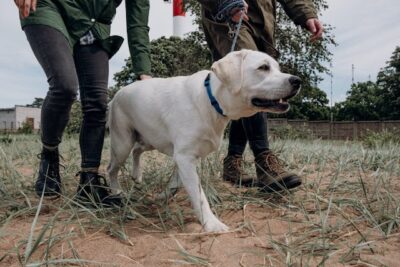
Maintaining and Cleaning Your Dog Leash
Cleaning instructions for different leash materials
To clean your dog leash, follow the manufacturer’s instructions based on the material. For nylon leashes, you can hand wash with mild soap and air dry. Leather leashes may require leather cleaner and conditioner for maintenance.
Checking for wear and tear
Regularly check your dog leash for signs of wear and tear, such as fraying, weak spots, or damaged hardware. Replace the leash if you notice any damage to ensure your dog’s safety during walks.
Replacing worn-out leashes
To maintain your dog’s safety, replace worn-out leashes promptly. Regularly inspect the leash for signs of wear, such as fraying or weak spots, and replace it when necessary to ensure your dog’s security during walks.

Traveling with Your Dog and Leash
Leash etiquette in public places
When traveling with your dog, practice proper leash etiquette in public places to ensure the safety and comfort of others. Keep your dog on a leash at all times, use a sturdy leash, and be mindful of other people and pets around you.
Choosing a travel-friendly leash
When traveling with your dog, choose a travel-friendly leash that is lightweight, compact, and durable. Look for leashes that can easily fit into your travel bag or pocket, making it convenient to use on the go.
Leash safety during car rides
When traveling with your dog in a car, ensure their safety by using a secure leash attachment to prevent them from moving around or distracting the driver. Consider using a seatbelt harness or a travel crate to keep your dog safe and comfortable during the journey.
Conclusion
Recap of key points in choosing the perfect dog leash
- Choosing the right dog leash is crucial for your dog’s safety and comfort during walks.
- There are several types of dog leashes, including standard flat leashes, retractable leashes, martingale leashes, adjustable leashes, and hands-free leashes, each serving different purposes.
- Features to look for in a dog leash include reflective strips for visibility at night, padded handles for comfort, durable hardware for security, and weather-resistant materials for longevity.
- Understanding leash laws and regulations is essential to ensure you comply with local requirements and keep your dog safe in public areas.
- Training tips for leash walking include teaching your dog to walk on a leash, correcting leash pulling behavior, and using positive reinforcement techniques.
- Safety precautions when using a dog leash include checking for leash damage before each use, properly securing the leash to your dog’s collar or harness, and avoiding leash tangling hazards.
- Maintaining and cleaning your dog leash involves following cleaning instructions for different leash materials, checking for wear and tear, and replacing worn-out leashes.
- When traveling with your dog, practice leash etiquette in public places, choose a travel-friendly leash, and ensure leash safety during car rides.
Importance of selecting the right leash for your dog’s safety and comfort
Selecting the right leash for your dog is crucial for their safety and comfort during walks. A suitable leash provides control, prevents accidents, and allows for enjoyable walks.
Different types of leashes cater to various needs, ensuring you can find one that suits your dog’s size, behavior, and walking environment. By choosing the right leash, you can enhance your dog’s walking experience and strengthen the bond between you and your furry companion.
If you’re looking for the perfect furry companion to walk with, consider adopting one of our puppies in Ohio and surrounding areas. At Little Puppies Online, we offer puppies that are thoughtfully bred from reputable breeders, ensuring they are healthy, happy, and well-socialized. Check out our available puppies for sale in Ohio and surrounding areas.
FAQs About Dog Leashes
- What types of dog leashes are available?
- There are several types of dog leashes, including standard flat leashes, retractable leashes, martingale leashes, adjustable leashes, hands-free leashes, and chain leashes.
- How do I choose the right leash for my dog?
- When choosing a leash, consider your dog’s size, behavior, and walking environment. For example, a retractable leash may be suitable for a well-trained dog in a safe area, while a standard leash may be better for a larger or more energetic dog.
- How long should a dog leash be?
- The length of a dog leash can vary, but a standard leash is typically between 4 to 6 feet long. The length should allow your dog enough freedom to explore while still keeping them under control.
- How do I clean and maintain my dog leash?
- The cleaning instructions for your dog leash will depend on the material. Nylon leashes can usually be hand washed with mild soap and air dried, while leather leashes may require special leather cleaner and conditioner. Regularly check your leash for signs of wear and tear and replace it if necessary.
- Are there leash laws I need to be aware of?
- Yes, many areas have leash laws that require dogs to be on a leash in public places. It’s important to familiarize yourself with local leash laws to ensure you comply and keep your dog safe.
- Can a dog leash help with training?
- Yes, a dog leash can be a useful training tool, especially for teaching your dog to walk politely on a leash and to prevent unwanted behaviors such as pulling or jumping.
- Are there different leashes for different dog breeds?
- While there are no specific leashes for different breeds, you may want to consider your dog’s size and strength when choosing a leash. For example, a larger or stronger dog may require a thicker or more durable leash.


